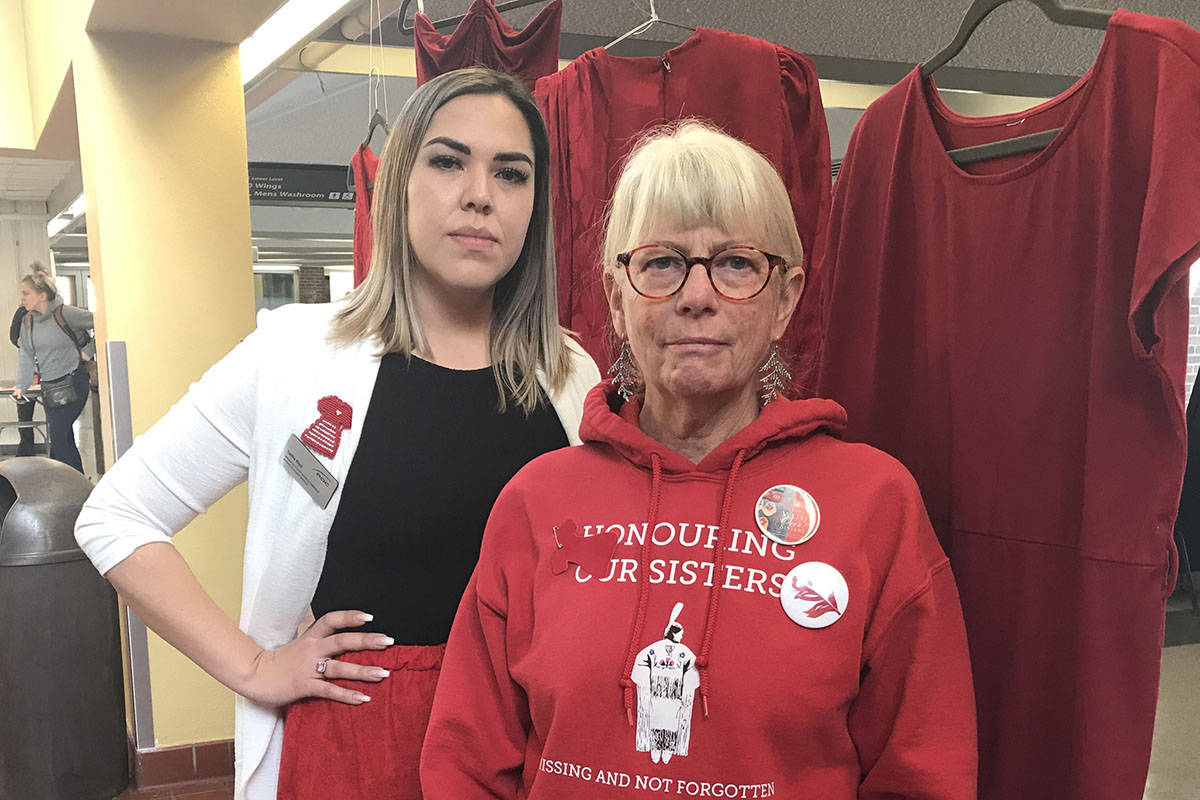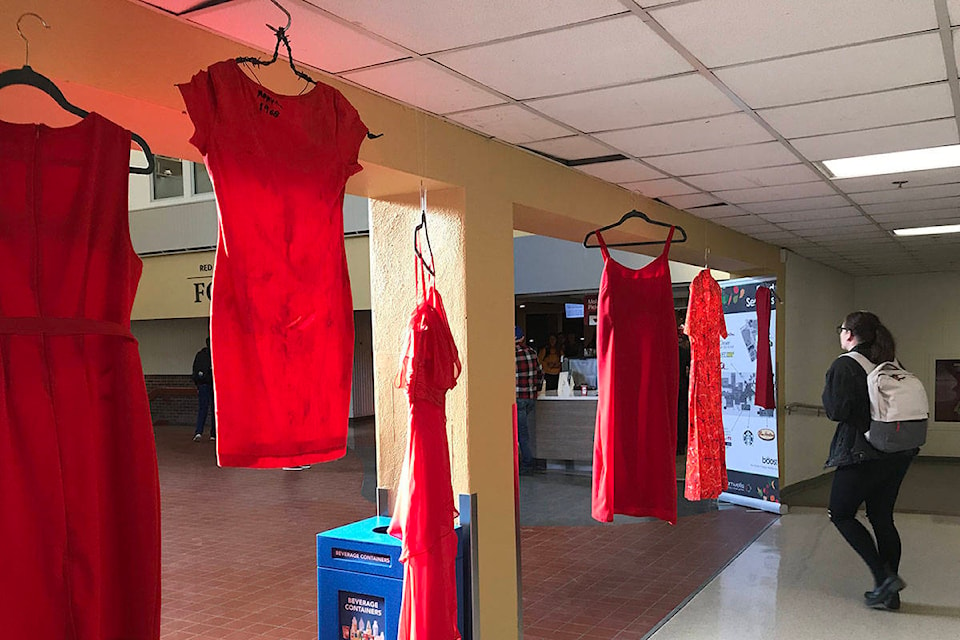Dozens of red dresses were hung around Red Deer on Monday, poignant reminders of the huge number of missing and murdered Indigenous women.
“The dresses that are hanging are empty. We’re trying to show the significance and the impact of the numbers of murdered and missing Indigenous women,” said Sheila Bannerman, of the Red Feather Women.
How many have gone missing or been murdered is not even known, said Bannerman. The last up-to-date numbers were gathered in 2015 as preparations were underway for that year’s tour of the Walking With Our Sisters installation, which was at the Red Deer District Museum and Art Gallery that June.
“At that time, we were told there were 1,200 murdered women (since 2012) whose cases were considered unfounded or were not followed up on,” said Bannerman.
“That’s a long time ago, and we don’t really have any updated stats because stats aren’t kept on this.
“That’s the issue. These women are human beings, they are people, they have human rights, they are family members and it doesn’t matter what the circumstances are of their lives,” said Bannerman.
“They are people and deserve the respect of an investigation into where they are if they’re missing or what happened if they were murdered.
“So that’s why we’re here.”
ALSO READ: Red dresses will be hung throughout Red Deer on Monday
What statistics are available tell a tragic story. The homicide rate for Indigenous women in Canada is six times higher than the rate for non-Indigenous women.
In 2015, Indigenous women accounted for nearly one-quarter of female homicide victims, even though they represent only 2.5 per cent of the population.
Indigenous women are five times more likely to die from violence as non-Indigenous women.
A forum was held at Red Deer College on Monday, which was the United Nations International Day for the Elimination of Violence Against Women.
Red dresses were first used to draw attention to missing and murdered Indigenous women in 2009, when Winnipeg-based Metis artist Jaime Black created the REDdress Project, an art installation that toured North America.
About 50 red dresses were donated and hung from trees around the city on Monday, including at City Hall, the courthouse, in front of the Red Deer Native Friendship Society’s office, and near the Dumpster where murder victim Talia Meguinis’s body was found in 2012.
Meguinis was killed on Feb. 20, 2012, and her body was stuffed into a Dumpster in the alley behind her Riverside Meadows apartment.
One of the dresses was also hung in Gasoline Alley as a reminder that highways often prove dangerous places for women, who unwittingly catch rides with predators.
Talitha Klym, who is with the college’s Indigenous students services, said they wanted to focus on Indigenous women for one day of the students’ association’s 16 Days of Activism against Gender-based Violence and reached out to the Red Deer Feather Women to participate.
They put together 500 postcards, each with a small felt red dress attached.
One side talks about the initiative and the back provides information on how people can get involved in spreading the message through their own actions and attitudes.
Klym found that many students were unaware of the significance of the red dresses, but have shown their interest in learning about it.
There’s been a lot of support,” she said.
pcowley@reddeeradvocate.com
Like us on Facebook and follow us on Twitter

